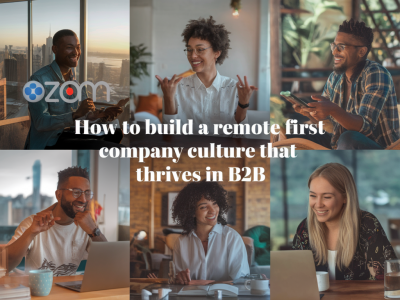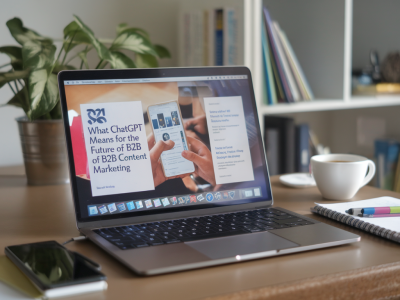
Gamification has taken the world by storm. While most of us associate it with consumer apps, video games, or even online learning platforms like Duolingo, its hidden potential lies in the world of B2B employee training. Often overlooked, gamification doesn’t just make training fun; it transforms how teams learn, engage, and retain knowledge. Today, I want to share the untold benefits of gamification in B2B employee training—benefits that I’ve personally experienced and witnessed in organizations that dared to embrace this innovative approach.
What Exactly is Gamification in Employee Training?
Let’s start with the basics: Gamification refers to the application of game principles, such as rewards, competitions, and storytelling, in non-gaming contexts. In employee training, this could mean adding leaderboards, awarding virtual badges for accomplishments, or implementing challenges to measure progress. It’s essentially about turning a learning experience into an interactive and engaging activity.
Why does this matter for B2B employee training? Because traditional corporate training often lacks engagement. Beyond that, employees can quickly forget what they’ve learned due to uninspired teaching formats. Gamification addresses both these challenges. And crucially, it creates a sense of progression, motivation, and excitement, especially in industries where rapid upskilling is needed.
Boosting Engagement and Motivation
I’ve seen it time and again: when employees are engaged, they perform better. Gamification taps into the competitive spirit of individuals and teams, driving intrinsic motivation in a way that e-learning modules and PowerPoint presentations never could. For example, integrating an element of social recognition, like leaderboards or public shoutouts for top performers, creates a healthy competition among employees.
Take Salesforce, for instance. Incorporating gamification into their training programs helped new hires and sales representatives quickly learn the ins and outs of their CRM software. Employees began earning badges for completing training levels or hitting key milestones. The result? A more motivated, better-trained, and highly engaged workforce.
As a business leader, I’ve implemented gamified training myself, rewarding team members with points and prizes for meeting weekly learning targets. I was amazed by the enthusiasm it generated. Even the most reserved employees became invested, and they consistently exceeded their learning goals.
Enhancing Knowledge Retention
Let’s face it: memorization doesn’t equal education. Most of us forget 70% of what we learn within 24 hours (this is known as the "forgetting curve"). Gamification combats this by weaving repetition, quizzes, and feedback loops into the training process, ensuring that information sticks.
One example comes to mind: IBM’s “Innov8” platform. Using a gamified simulation, employees were trained in business process management (BPM). The interactive nature of the program boosted knowledge retention by encouraging participants to actively “learn by doing” rather than passively consuming information. And because gamification often involves feedback mechanisms (think quizzes with instant results), employees can correct mistakes on the spot, solidifying learnings in real-time.
Building Team Collaboration
Have you ever noticed how games bring people together, even those with little in common? When applied in a B2B context, gamification can create stronger team cohesion. Employees who collaborate to achieve shared goals through team-based challenges can form deeper bonds while building complementary skill sets.
For instance, Deloitte’s Leadership Academy used gamification to enhance the leadership skill sets of participants worldwide. By incorporating team activities and role-playing scenarios, Deloitte not only made the learning process enjoyable but also cultivated peer-led collaboration across its extensive network of professionals.
In my own experience, embedding gamified elements like team trivia challenges about our company created a surprisingly effective way to build camaraderie among team members. It wasn’t just fun—it also increased interdepartmental communication and sparked a collaborative spirit that carried over into day-to-day operations.
Solving the Modern Challenge of Remote Training
With remote and hybrid work becoming the new norm, traditional training methods often feel disconnected. Gamification, however, bridges this gap by creating an immersive, shared experience—regardless of physical location.
For example, platforms like Kahoot! and Mentimeter allow companies to host gamified quizzes and learning modules in virtual team meetings. I’ve found these tools particularly useful for icebreaking during remote workshops or onboarding sessions. The games themselves create a sense of presence, making employees feel connected even from miles apart.
One B2B enterprise that’s nailed this? Microsoft. They implemented gamification for their global remote workforce through their internal “Productivity Games” initiative. Employees participated in gamified learning experiences related to their software tools, which not only made training engaging but also improved their digital fluency. Their success serves as a roadmap for companies striving to make remote training more effective.
Customized Training for Every Learning Style
Gamified training works wonders because it adapts to different learning preferences. Whether your employees learn best by reading, watching, doing, or competing, gamification provides avenues for everyone. From video-based modules to interactive challenges, it combines various formats that cater to all types of learners.
Take McDonald’s as an example. To onboard staff more effectively, the fast-food giant gamified its training program by creating a mobile app filled with engaging games and tutorials. Employees could learn operational procedures at their own pace, fostering a sense of autonomy and personal achievement while alleviating the monotony of traditional instruction manuals.
How to Get Started with Gamification?
You might be wondering, “How do I bring gamification into my B2B training ecosystem?” The answer is simpler than you might think:
- Define clear outcomes: Start by identifying the problems you want gamification to solve. For example, are employees struggling with knowledge retention? Or do they lack motivation to complete training?
- Select the right tools: Leverage platforms like Axonify, Quizizz, or Kahoot! to kickstart your program. Even simple integrated features in your LMS (Learning Management System) can work wonders.
- Create small wins: Break down training goals into bite-sized chunks and reward micro-achievements to keep the momentum going.
- Measure and iterate: Use analytics to track participation and results, then adjust your approach to focus on what works best for your team.
The beauty of gamification lies in its scalability. Whether you’re a budding entrepreneur or an established multinational, gamification can be tailored to fit your needs. And this adaptability is precisely why it has earned a spot in the toolkit of forward-thinking business leaders worldwide.

